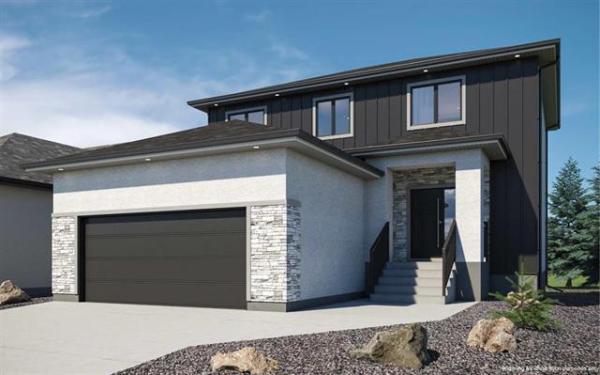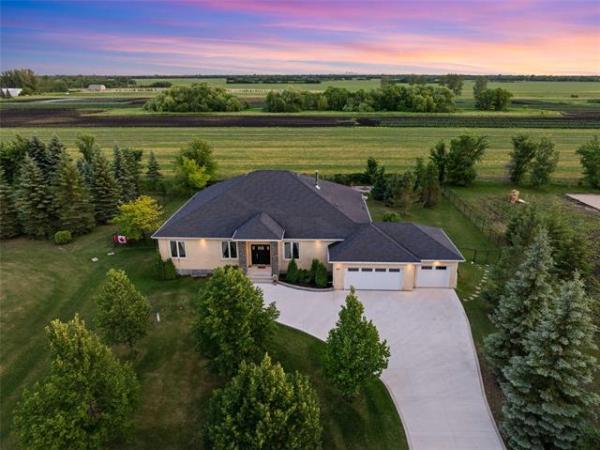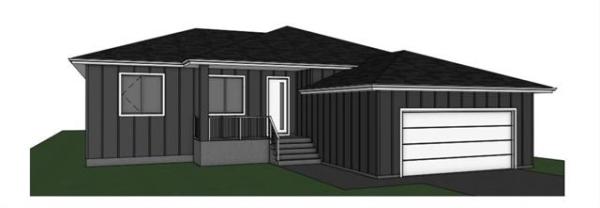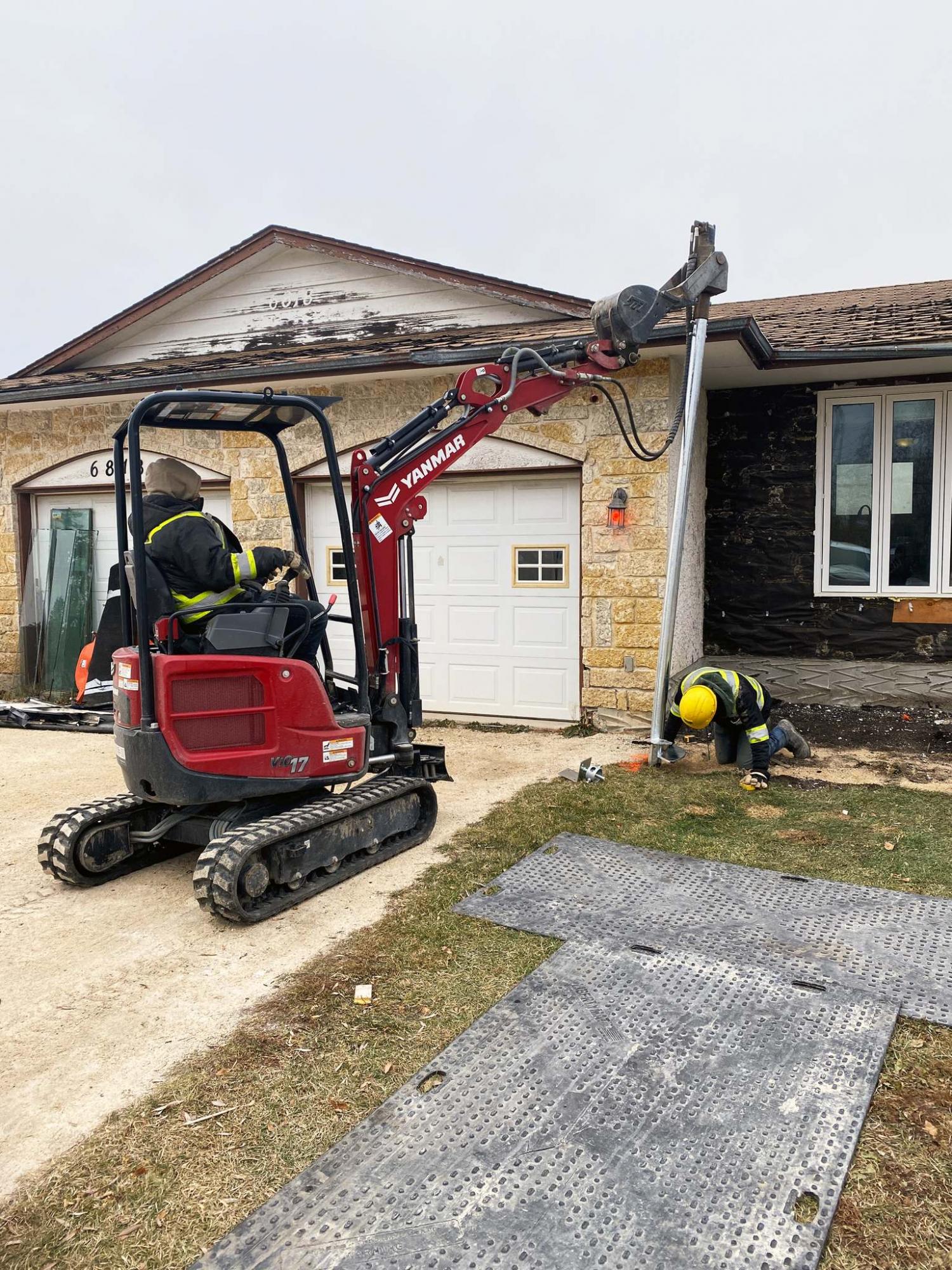
A crew member guides the pile and ensures a level and square installation while the operator carefully places it.
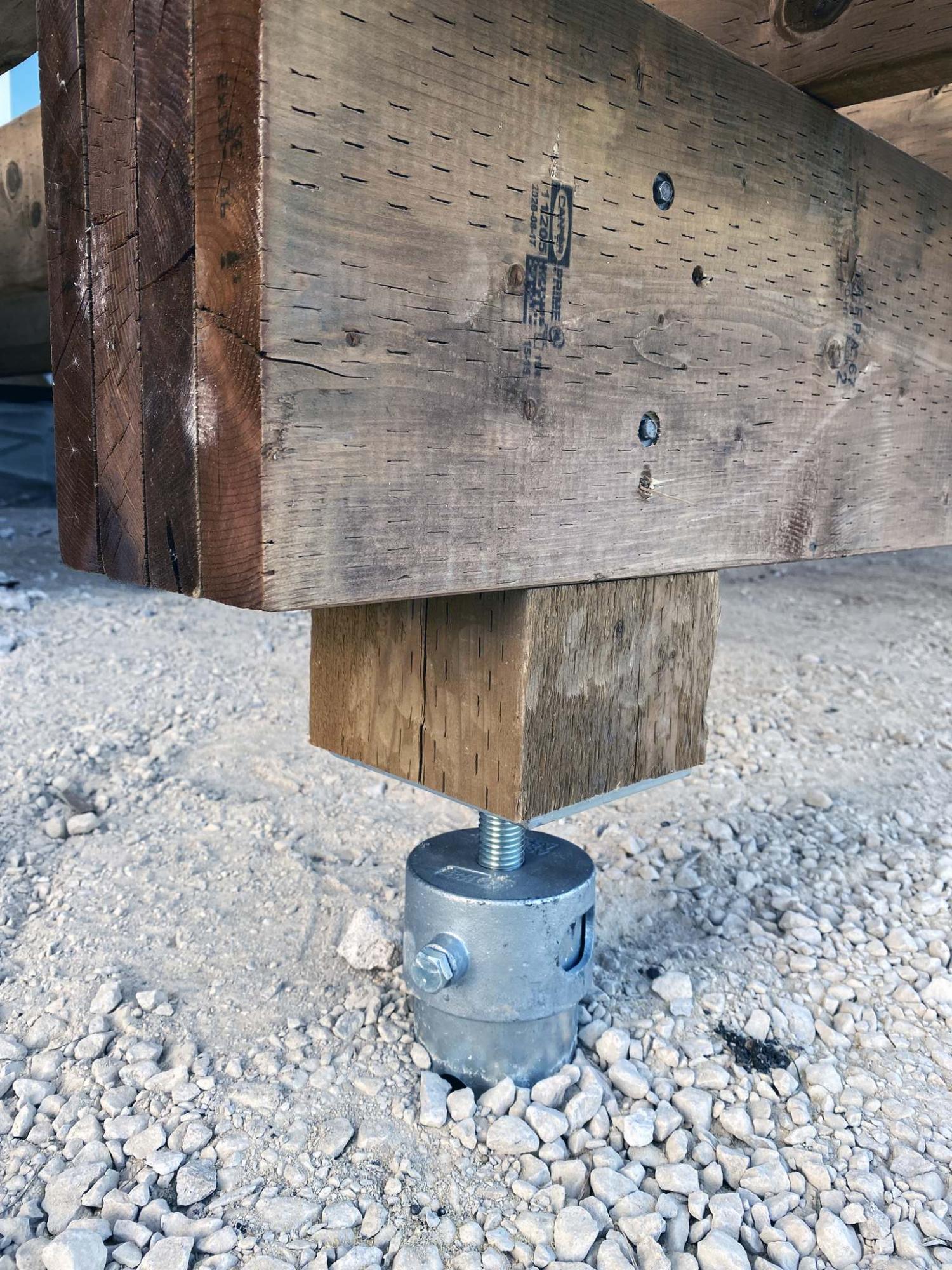
Each helical screw pile is countersunk until just the adjustable L-shaped adapter remains visible — upon which the beam rests.
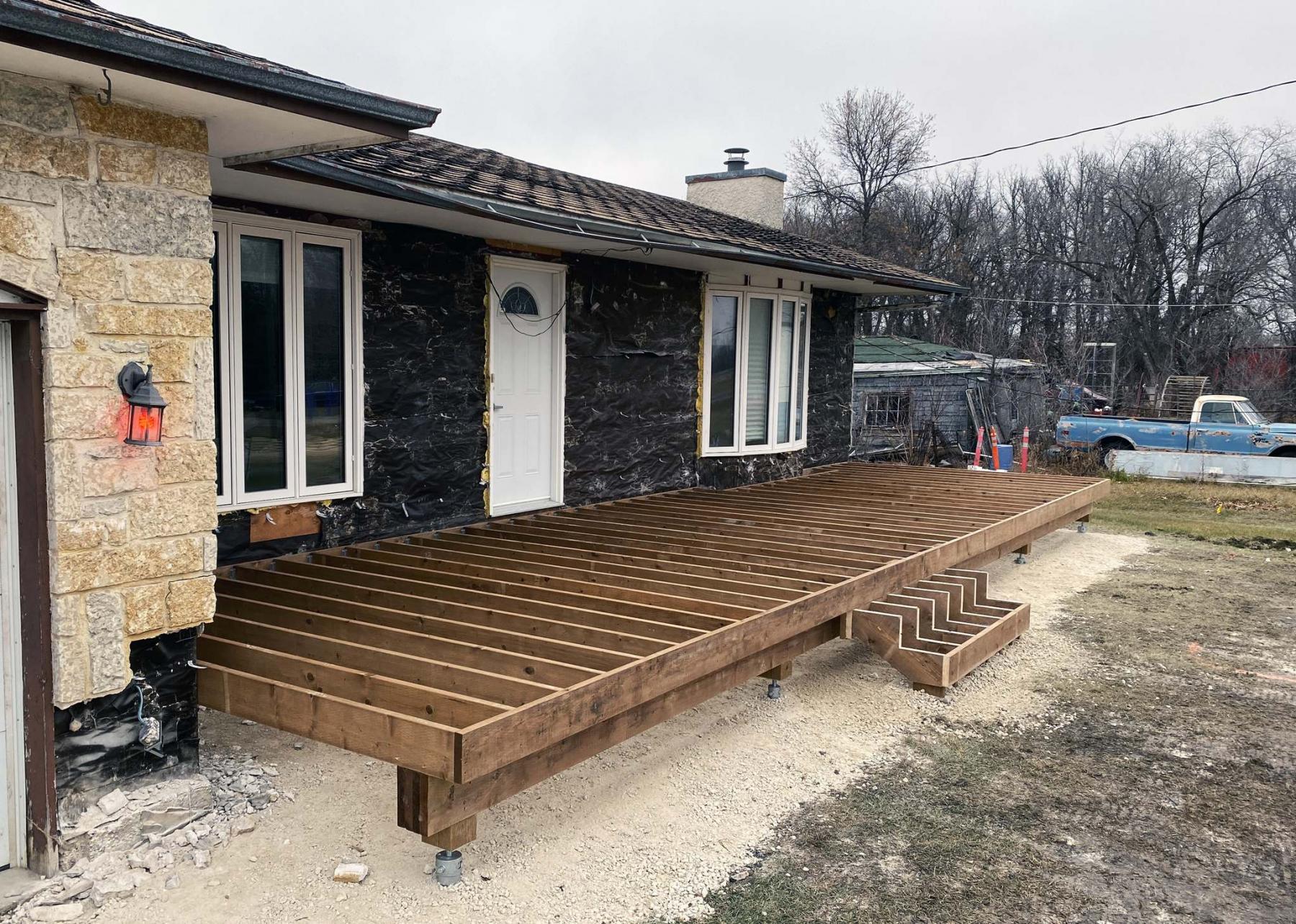
Photos by Marc LaBossiere / Winnipeg Free Press
Joists sit atop a quadruple-laminated beam supported by PosTech helical screw piles.
Most of my deck projects are framed using a common method — joists atop a laminated beam supported by posts and pads. To accommodate a 38-foot long and 11-foot deep front porch project on a house near Lockport that also includes a new roofline, the architectural drawings indicate that posts and pads would not suffice.
As a result the good folks at VersaPile Helical Screw Pile Contractors were called in to lend a hand.
On the porch plans, the engineer indicated that five piles are needed to support the weight of both the porch deck itself, as well as the multiple trusses that create the new roofline. Because the trusses are only supported at each end, the outer piles are beefier to support both the deck framework, and the new roofline weight. The inner three piles would support only the weight of the deck, along the 38-foot long quadruple laminated two-by-ten beam. The porch plans were forwarded to Clint Warwick, senior sales rep at VersaPile. Within minutes, Warwick determined exactly what helical piles would best satisfy the load demand of the project, and an install date was established.
The exact location of each screw pile was first marked on the ground. Once the VersaPile crew was on site, the two outer and larger screw piles were the first to be installed. As one of the guys worked the controls of the YanMar Vio 17 excavator with drill attachment, the other ensured that the pile entered the ground on the mark, and remained perfectly level as it was being countersunk. With the outer piles in the ground, the three smaller inner piles were then installed. Within about two hours (and just as the weather began to turn ugly), the job was completed, and the boys were on their way to the next jobsite.
It was an extremely satisfying activity to witness, and it intrigued me considerably. Lingering questions have arisen throughout the years regarding screw piles, and the owner of VersaPile Inc., Stan Higgins was more than willing to indulge my curiosity — Higgins shed some light on a few of my queries. The first thing Higgins clarified was the use of the term ‘screw pile,’ which in some instances can be misleading. "Helical pile specifically describes a pile designed with a shaft and a consistently pitched helical which meets design principles for a technology that is extensively engineered and highly predictable," Higgins said. "As a result, VersaPile Inc. does not carry anything that does not qualify as a helical pile, such as a Wilson Anchor or Groundhog Anchor, whereby the design is unique and by comparison to helical piles, the engineering is very limited."
Founded in 2011, after a poor customer experience with local piling contractors, VersaPile Inc. has installed tens of thousands of helical piles for satisfied customers throughout Manitoba. "Helical piles, to our knowledge, have gone as deep as 135 feet near Gretna. Typically, a 10-foot helical pile is often used for lightly loaded structures, whereas 20 to 60-foot depths are common for higher loaded structures in and around Winnipeg. In Manitoba, larger helical piles can offer a 135,000-pound capacity, VersaPile’s current maximum capability. In theory, much higher loads could be achieved by bringing in larger anchor drives, and there is a strong probability that we will be increasing our capabilities in the near future."
For my front porch purposes, the two outer helical piles are 10-foot long and six-inch thick shafts with a 16-inch helical, each with a 10,000-pound load capability whereas the inner three of same length and a 12-inch helical can handle 5,000 pounds each, surpassing the engineer’s requirements on the architectural drawings. A six-inch L-shaped adapter atop each pile provides a flat surface upon which the 2x10 laminated beam rests. It was clear from the onset of setting the joists, that this porch support is extremely rigid. Higgins details why it is so important to use screw piles in lieu of posts and pads for heavier structures.
"All piles are designed to eliminate the movement of structures, including helical piles. A surface pad or shallow footing is subject to seasonal movement due to expansion and contraction of the soils within the active zone. The active zone is near surface soil layers that are prone to fluctuations due to temperature and moisture content.", Higgins said. "A shallow foundation will always move but it’s not always noticeable — if the movement is uniform, there is no perceived movement. However, the real issues arise when the seasonal movement is not uniform, known as differential movement. Differential movement stresses the structure, in minor cases you might notice the doors and windows are sticky, left without remedy this could lead to cracks, sloping or ultimately an outright foundation failure. Piles provide a deep foundation that transfers the overall support of a structure to soil layers that remain consistent. In turn, the structure remains stable and impervious to seasonal fluctuations."
According to Higgins the winter months will eventually become their busiest time, despite the issues that surround installing screw piles into frozen ground. We were, however, very happy to have VersaPile satisfy this project’s helical screw pile needs well BEFORE the snow and cold came to stay.
Now that the front porch deck portion of the project is fully framed, it provides a great head start on next spring’s roofline tasks. Thanks VersaPile, job well done!
BossEnterprise@outlook.com

